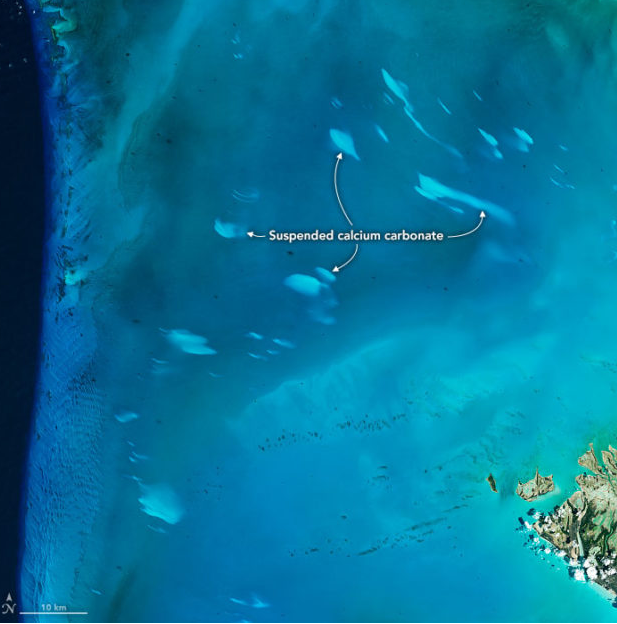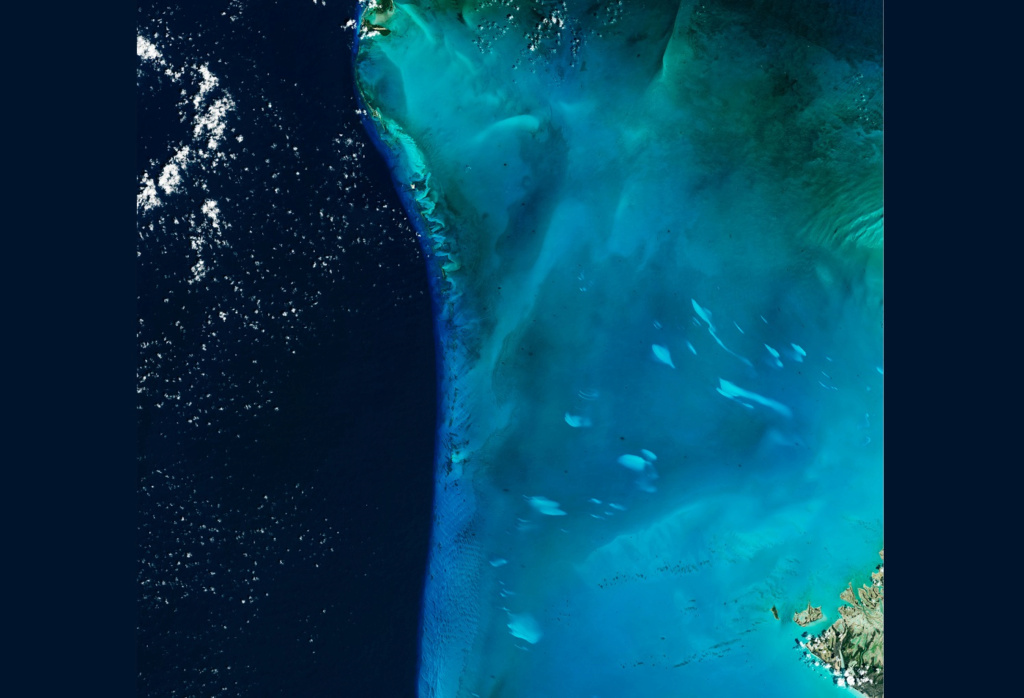Mysterious White Clouds Continue To Appear Near The Bahamas

The piece of ocean wedged between Florida and the Bahamas is one of the most well-studied marine environments in the world, yet it is also the center of an enduring geological puzzle.
Since at least the 1930s, scientists in the area have noticed strange white clouds rising from the calm surface of the turquoise water.
This strange phenomenon is called the "albedo event," and scientists still don't understand why it happened in the Bahamas.
And it became a kind of "white whale" for researchers at the nearby University of South Florida (USF).

NASA Earth Observatory/Joshua Stevens, using US Geological Survey data
Mysterious patches of light-colored oceans are sometimes seen in other oceans and lakes around the world, but in the Bahamas, they are more visible.
Direct samples indicate that they contain high concentrations of carbonate-rich particles.
Much of the Bahamas archipelago lies on a submerged carbonate platform known as the Bahamas Banks. Does this mean that sediment is rising to the surface? Or could it be that phytoplankton ?blooms actually produce suspended matter
No one knows the answer to these questions, but scientists at the University of South Florida are determined to find out. They used satellite imagery from NASA to show how albedo events ebb and flow in the Bahamas.
The team doesn't know if the trends they identified are natural or man-made, but what they do know is that from 2003 to 2020, the magnitude of these whitening events seemed to be related to the seasons.

The largest spots occurred from March to May and from October to December. On average, the white spots were about 2.4 square kilometers per piece. On a clear-sky day, satellite images usually capture about two dozen images, covering a total area of 32 square kilometers (12 square miles).
However, between 2011 and 2015, the patches suddenly swelled in size, covering more than 200 square kilometers (77 square miles) of ocean at their peak. However, by 2019, the spots had shrunk again, although they were never as small as they used to be.
The results suggest that a 10-year cycle may play a role. But a course of what exactly?
"I wish I could tell you why we saw this peak in activity, but we're not there yet," says USF oceanographer Chuanmin Hu. We do see some interesting relationships between environmental conditions, such as pH and salinity, and the behavior of winds and currents, but we can't yet pinpoint the exact mechanical, biological or chemical processes responsible for those peaks in activity."
More direct field trials are needed, and not just in the Bahamas. Comparing spawning events in other regions can help scientists see what common features they share.
The USF researchers tested their model on white events in the Great Lakes with initial success, but now they need to support those patterns on land, or rather, in water.
Some studies have shown, for example, that albedo events occur more in places with muddy sediments.
In addition, some ocean conditions can favor the suspension of sediment and calcium carbonate in the water column.
Without further evidence, all of these theories will remain that way.
The study has been published in the journal Remote Sensing of Environment.
Source: websites

